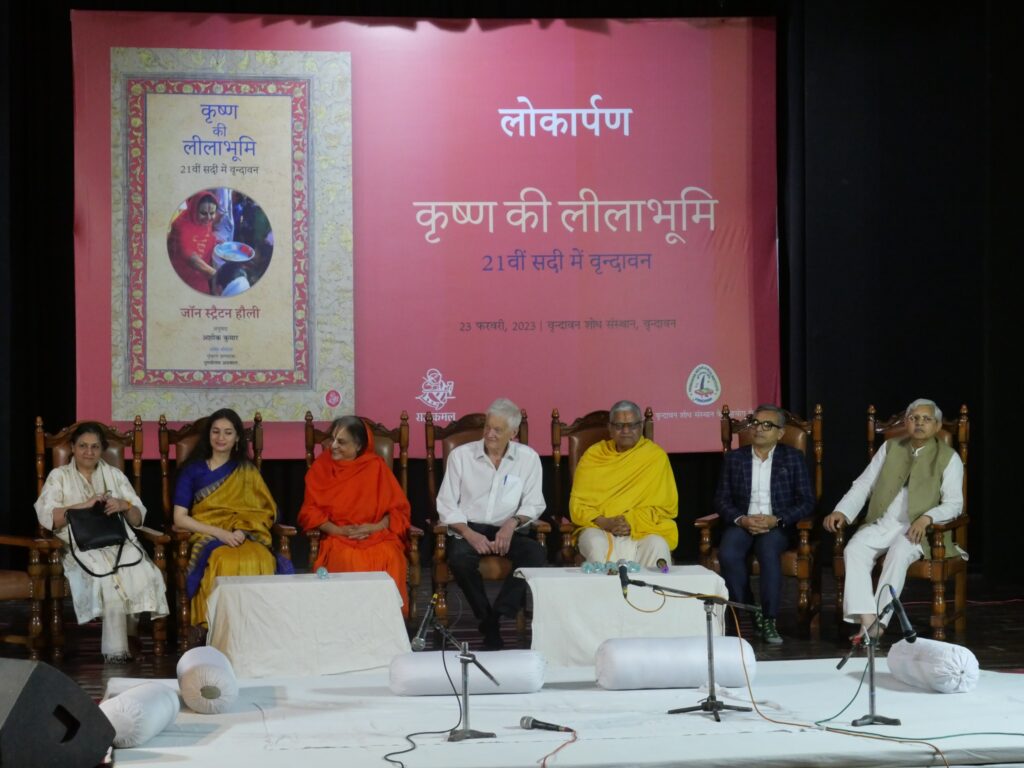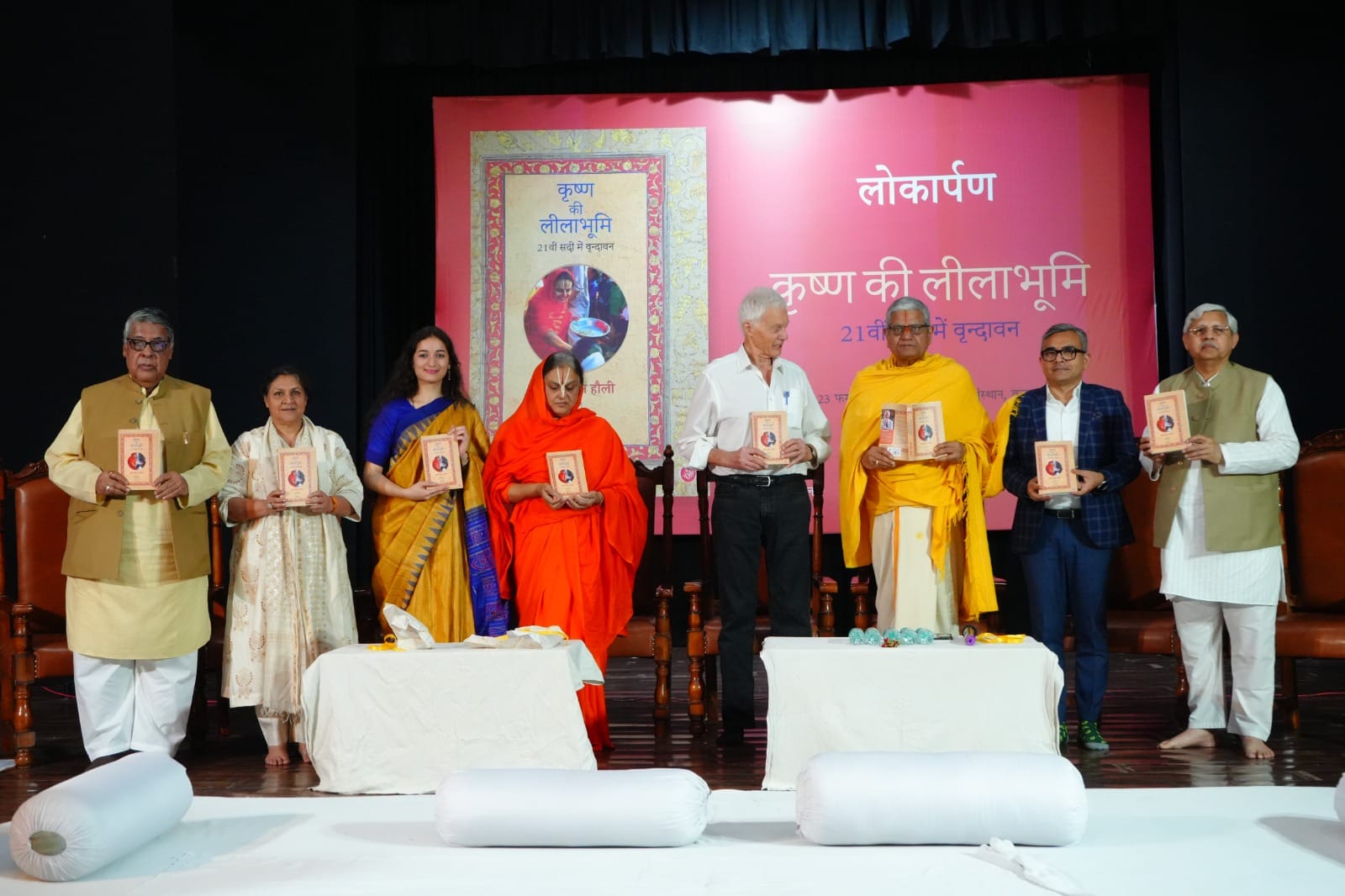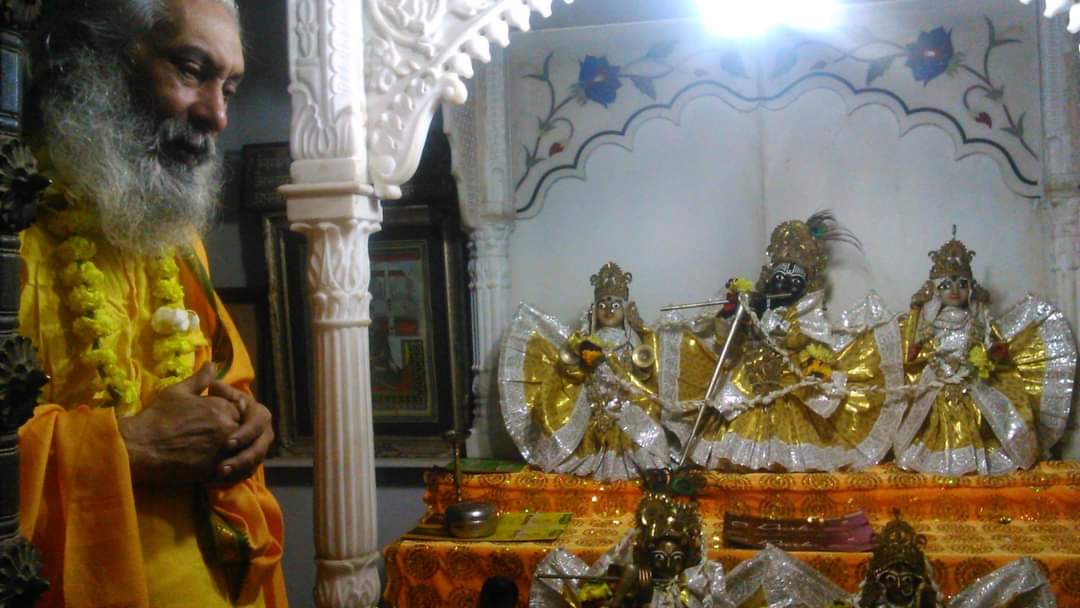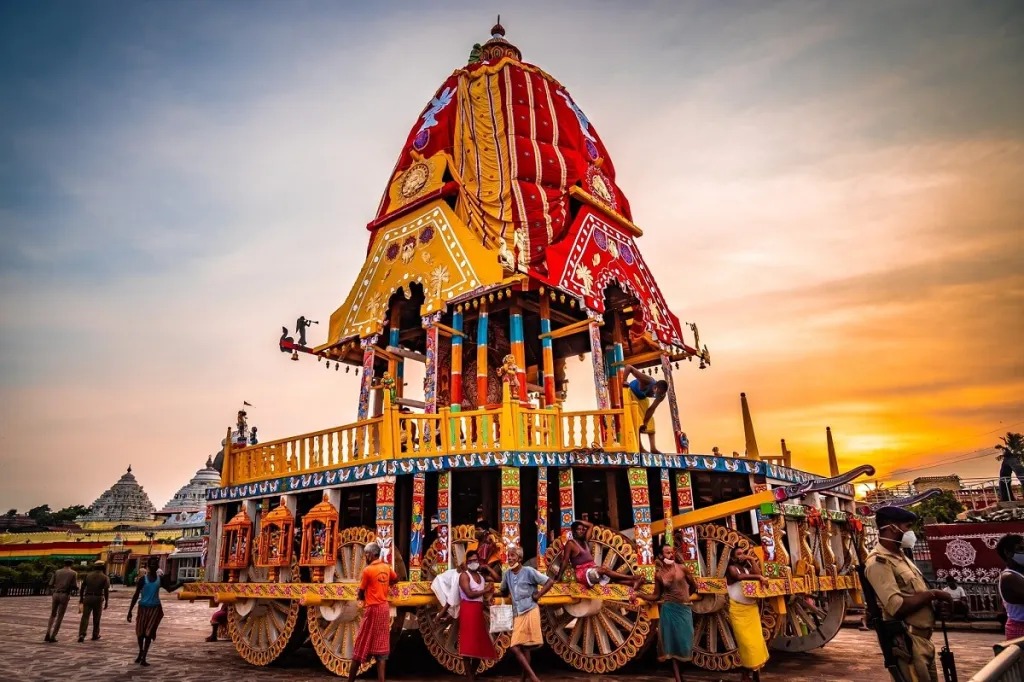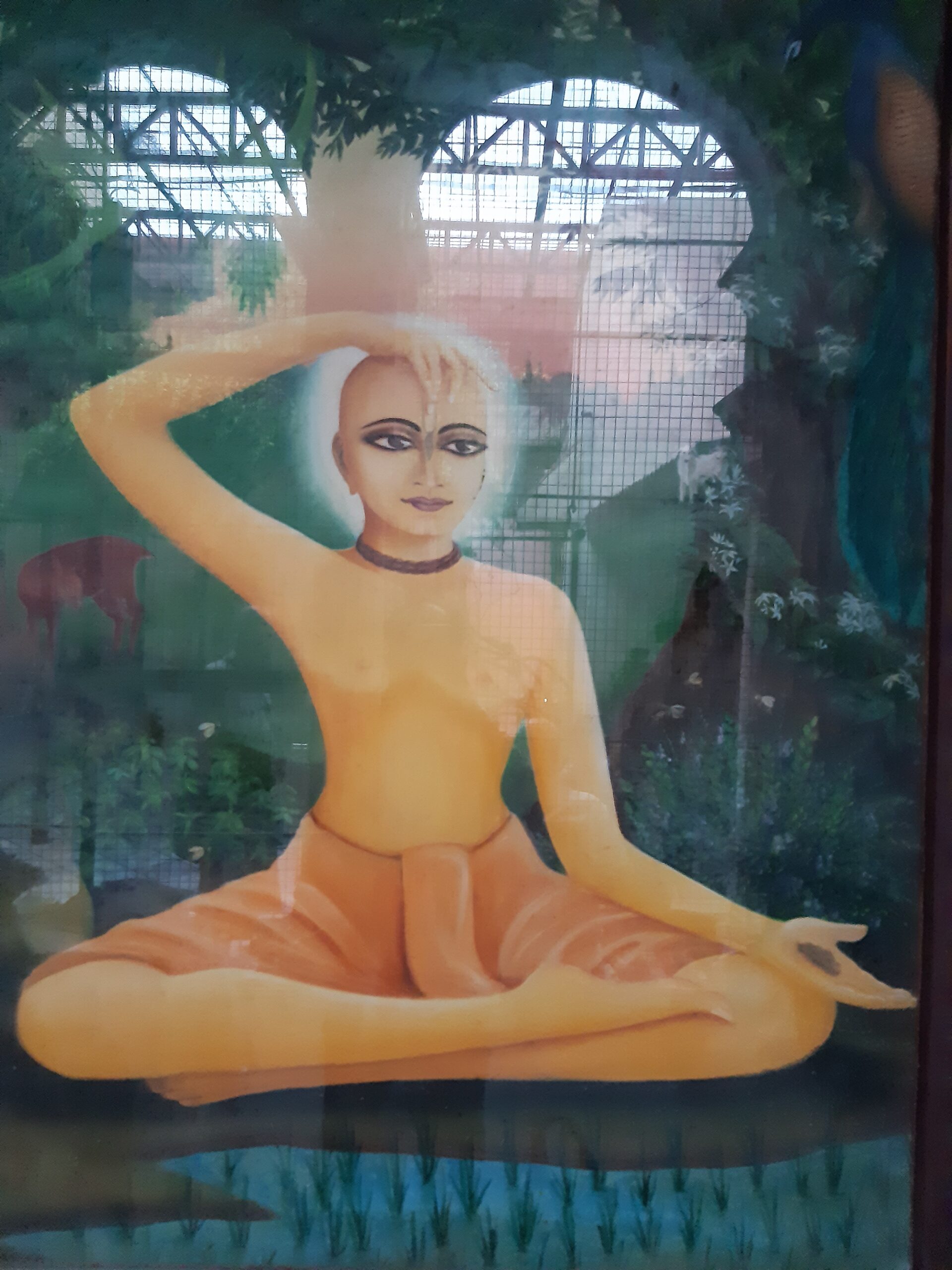In many ways the book evokes questions about the town’s status as a heritage landmark. Especially when the temples here now style themselves as theme parks, and the world’s tallest religious building is under construction in Krishna’s pastoral paradise. Mr. Holley, the author of the book spoke about his efforts to establish a dialogue between the antiquity and novelty of Vrindavan through his work.
2023.02.23 (Vrindavan Today News): The Hindi version of the book ‘Krishna’s playground: Vrindavan in the 21st Century’ released at Vrindavan Research Institute on Thursday. Renowned writers and academicians launched the book named ‘कृष्णा की लीला भूमि’ २१ वीं सदी में वृन्दावन. Originally, the book written in English by Prof. John Stratton Hawley was released by Oxford University Press in 2020. The Hindi edition is published by Rajkamal Prakashan, New Delhi under their “Bhakti Mimamsa” series. The book is edited by Purushottam Agarwal Ji and translated by Ashok Kumar Ji.
The event began with the musical rendition of the traditional padas based on Holi and Basant by Smt. Aastha Goswami. After this the author gave a power point presentation about the book. He gave comparative presentation Vrindavan now and then, when he came first time in Vrindavan 40 years back. This book gives an account on the journey of Vrindavan from a small temple town, to the hotspot for the real estate developers.
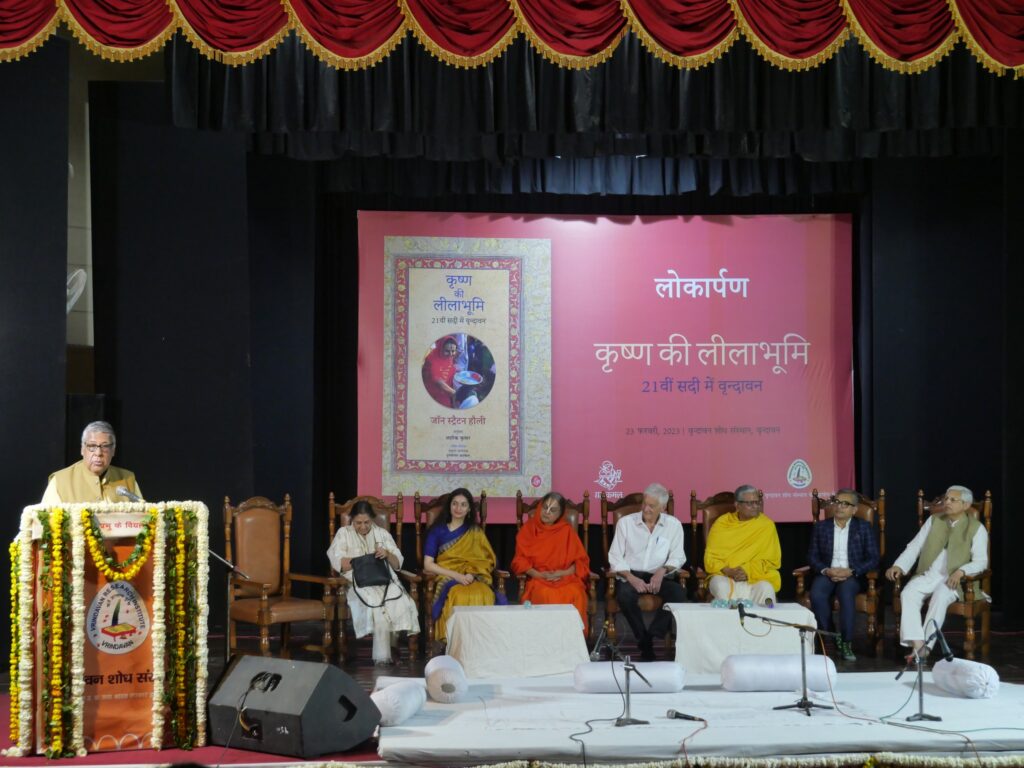
The book is based on his over 40 years of visiting and working in Vrindavan, especially the last decade and half, when it became clear that the town was being dramatically, perhaps irreversibly transformed. Everyone present in the book release ceremony engaged in a lively and thoughtful debate on the various topics covered in Prof. Hawley’s book.
In many ways the book evokes questions about the town’s status as a heritage landmark. Especially when the temples here now style themselves as theme parks, and the world’s tallest religious building is under construction in Krishna’s pastoral paradise. Mr. Holley, the author of the book spoke about his efforts to establish a dialogue between the antiquity and novelty of Vrindavan through his work.
During the book release ceremony, Acharya Shrivatsa Goswami emphasized the need for a universal ideological base to protect Vrindavan, which is facing a conflict between pilgrimage and tourism. Other speakers, including Ashok Maheshwari and Mauli Kaushal stressed the need for dialogue between conservationists and the proponent of the modern day developments. They highlighted the role of temples in protecting spirituality art and culture.
Shri Purushottam Agrawal presided of the function of the book release. Prof. John Stratton Hawley, Acharya Shrivatsa Goswami ji, Swamini Vishwamohini Ji, Ashok Maheshwari Ji, Purushottam Agarwal ji, Molly Kaushal ji, Rimpesh Sharma and Vishnupriya Goswami attended the release of the Hindi translation of “Krishna’s Playground: Vrindavan in the 21st Century” titled “Krishna Ki Leelabhoomi” at Vrindavan Research Institute, Vrindavan.
John Stratton Hawley on his new book and how the city’s history is steeped in a vision of ‘Hinduism
- By John Stratton Hawley
One of the first things we learn in this book, a Hindi translation of Krishna’s Playground: Vrindavan in the 21st Century, is that you can never be very far from Vrindavan. New Vrindavans have sprung up all over the world to prove that fact. And indeed, there comes a point in his life when Krishna himself leaves Vrindavan. In a famous episode, he sends a messenger to the gopis he has left behind to make sure they know he is always with them in mind and spirit, wherever he physically may be. Uddhav may carry this message, but the gopis refuse to listen. They want Krishna in their Vrindavan, this Vrindavan, the one spread out on the banks of the Yamuna. Their side of the Yamuna!
COVID has taken a long time to pass, and in those three long years I have been waiting on the other side of the world. However much I hold Vrindavan in mind, however much I talk about it with students, and however much I even have a chance to watch Radharamanji’s darshan from 10,000 miles away, there is still no substitute for the real thing. As I write this, I’m thrilled to be back for the first time since January 2020, when the English version of this book came out.

In many ways Vrindavan looks unchanged—just more like the town it was fast becoming in 2020. Construction is everywhere. Some housing projects that were halfway done in 2020 are now finished: Shri Krishna Heights, for example, and large parts of Krishna Bhumi, the real estate mammoth right next to the Vrindavan Chandrodaya Mandir. The first of four temples that will serve as a base for the Mandir’s 70 stories is now some sixteen stories high, still under construction. And more, more, more is yet to come. On the new side of Vrindavan, Vrindavan itself seems to have turned into vrindavanproperty.in or one of its many property.com brothers.
So the momentum continues. The Parikrama Marg is even more crowded than when I left. Lines to Bihariji’s temple (for many, the center of it all) are longer than ever, and in 2020, when the central government’s strict proscriptions were relaxed, they stretched literally kilometers. As my dear friend the Vrindavan scholar Samrat Kumar explained, it was darshan of their own ishtadevata that people most needed in a time of such deep need, so the press near the temple itself exceeded any precedent. In 2022, when the worst was over, the traffic on the big Mathura Road, where Samrat lives, was so thick that you could scarcely walk out the gate. In a time when it was well known that crowds could bring great danger, crowds were exactly what Vrindavan had to offer.
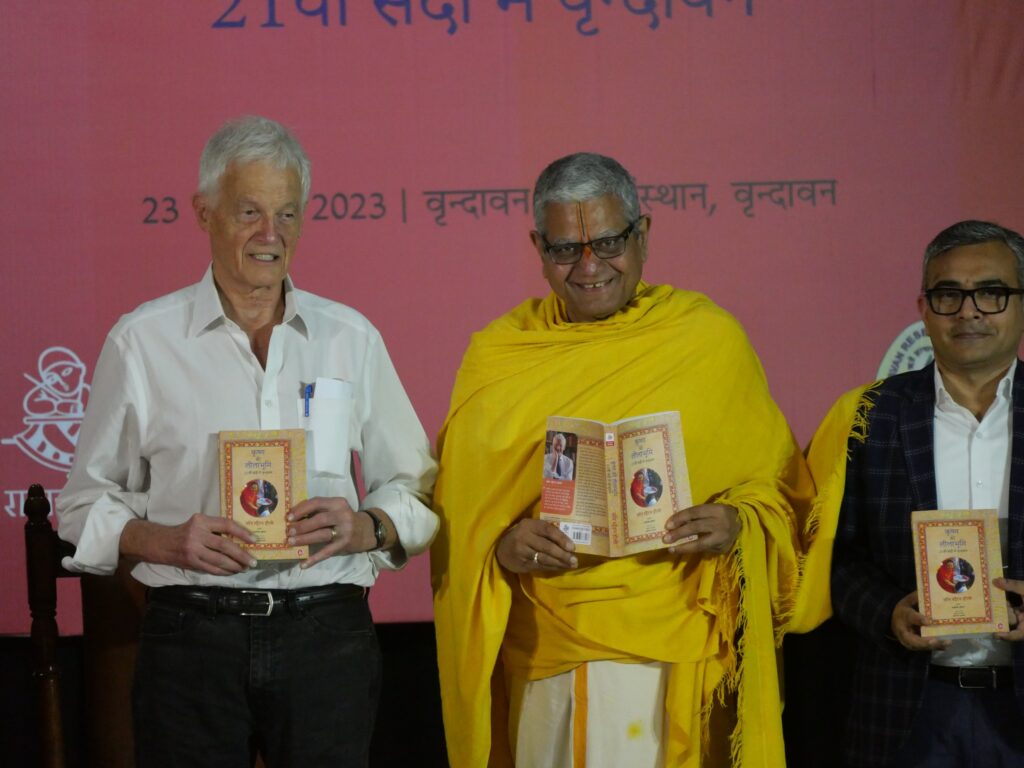
Meanwhile, what about the river? Huge concrete platforms were being laid into the Yamuna when I left. These were to support a new ring road, a yet-better Parikrama Marg for an automated age, which would bypass iconic Keshi Ghat. Since it was illegal, though, this fact was not always admitted. The platforms are still there but not yet the road itself—luckily so, from my perspective. Yet Keshi Ghat isn’t safe from change. Its great old steps have been renamed Arati Ghat by a few religious entrepreneurs: big brightly painted signs make this clear. Pilgrims who come to make their evening offerings still have to step across huge broken sewer pipes to set their lamps floating in the Yamuna, that sadly polluted river, and that, indeed, is what they do. Bright-eyed kids try to sell me some of the little cruses.
All this is quite familiar, but people say the government has big new plans. I hear that a temple-to-river corridor mimicking the wildly popular Kashi Vishvanath Corridor in Banaras is soon to be built, once environmental restrictions can be cleared. All the structures between Bihariji’s temple and the old temple of Madan Mohan will be demolished—except other temples, I suppose. There seems no doubt about the fact that we are on the cusp of the Modi Yug, as far as Vrindavan is concerned.
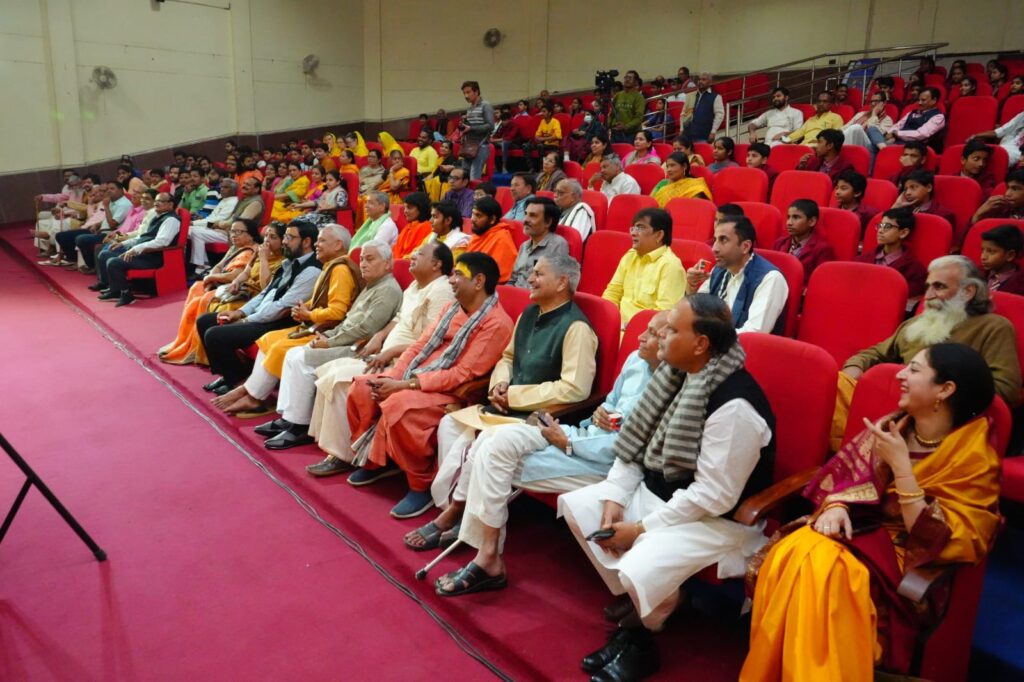
Meanwhile, what about the old Vrindavan, the one that began to be built in the sixteenth century? Its legacy too remains. The night I arrived in mid-January 2023 was dark and cold, but inside the temple of Radhamanji, like so many others, there was a huge burst of noise and warmth and light. Bodies pressed against bodies as music pealed out from the back of the courtyard and everyone waited for Radharaman’s young priests to open the garbhagriha doors for shayanarati. Women danced, men danced, then men and women danced together. Old people got up and hobbled into the line. Yes, they danced too. Ten young men tightened into a whirling circle near the musicians, and mobiles lit up everywhere to catch the scene. Lots of clapping everywhere. This is the beating heart of Vrindavan—thump, thump, thump. It’s been beating for 500 years.
Please join me in trying to understand this new-old Vrindavan. Please celebrate its past and worry about its future with me. Remember, too, that I am just a yatri, just a visitor—and a foreign one at that. I owe everything to those who visit much more often than I, and to those who live here. My Hindi is far more halting than I wish, but even so, Vrindavan people have opened their hearts and minds to me. I first came 50 years ago, and it’s been that way every since.
The launch of Krishna ki Lilabhumi marks the moment when my story of Vrindavan returns to the language that made it possible. It’s been translated out of English to the Hindi where, in so many senses, it began. For this transformation I owe huge thanks to the translator—the talented, patient, deeply experienced Ashok Kumar. English is mixed in too, just as it is in the new Vrindavan, but without Hindi and Brajbhasha there would be no way to find our true bearings. This year has been a homecoming for me, and this book is a language homecoming.
